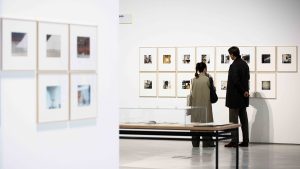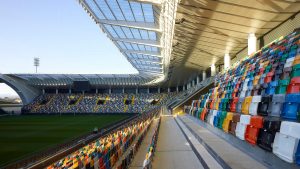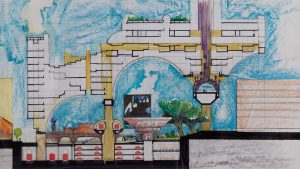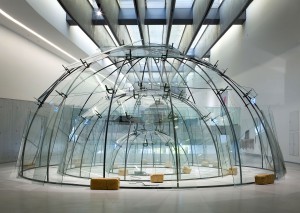- special reduced price € 10
single ticket valid until 17 April, for all ongoing exhibitions, due to the refurbishment of 2 galleries
- full price € 15 at the box office - € 14 online
- reduced price € 12 at the box office - € 11 online
for young people aged between 18 and 25 (not yet turned 25); for groups of 15 people or more; La Galleria Nazionale, Museo Ebraico di Roma ticket holders; upon presentation of ID card or badge: Accademia Costume & Moda, Accademia Fotografica, Biblioteche di Roma, Centro Sperimentale di Cinematografia, Enel (for badge holder and accompanying person), FAI – Fondo Ambiente Italiano, Feltrinelli, Gruppo FS, IN/ARCH – Istituto Nazionale di Architettura, Sapienza Università di Roma, LAZIOcrea, Palazzo delle Esposizioni, Amici di Palazzo Strozzi, Accademia Nazionale di Santa Cecilia, Scuola Internazionale di Comics, Teatro Olimpico, Teatro dell’Opera di Roma, Teatro di Roma, Università degli Studi di Roma Tor Vergata, Youthcard; upon presenting at the ticket office a Trenitalia ticket to Rome purchased between 27 November 2024 and 21 April 2025
- open € 18
valid for one year from the date of purchase
- free
minors under 18 years of age; upon presentation of disability card or accompanying letter from hosting association/institution for: people with disabilities and accompanying person, people on the autistic spectrum and accompanying person, deaf people, people with cognitive disabilities and complex communication needs and their caregivers, people with serious illnesses and their caregivers, guests of first aid and anti-violence centres and accompanying operators, residents of therapeutic communities and accompanying operators; EU Disability Card holders and accompanying person; MiC employees; myMAXXI cardholders; registered journalists with a valid ID card; European Union tour guides and tour guides, licensed (ref. Circular n.20/2016 DG-Museums); 1 teacher for every 10 students; AMACI members; CIMAM – International Committee for Museums and Collections of Modern Art members; ICOM members; journalists (who can prove their business activity); European Union students and university researchers in art history and architecture, public fine arts academies (AFAM registered) students and Temple University Rome Campus students from Tuesday to Friday (excluding holidays); IED – Istituto Europeo di Design professors, NABA – Nuova Accademia di Belle Arti professors, RUFA – Rome University of Fine Arts professors; upon presentation of ID card or badge: Collezione Peggy Guggenheim a Venezia, Castello di Rivoli Museo d’Arte Contemporanea, Sotheby’s Preferred, MEP – Maison Européenne de la Photographie; on your birthday presenting an identity document
Casa Balla | until 27 April 2025
- full price ticket € 18
- reduced price ticket € 15
for groups of 12 people in the same tour; myMAXXI membership card-holders; registered journalists with valid ID
- reduced price ticket € 12
under 14 years of age
- free ticket
disabled people + possible accompanying person; minors under 3 years of age (ticket not required)
Collection
MAXXI’s Collection of Art and Architecture represents the founding element of the museum and defines its identity. Since October 2015, it has been on display with different arrangements of works.


















































14 April – 10 July 2011
curated by Esmeralda Valente
Study Room – Gallery 1
In occasion of the most recent acquisition by MAXXI Architettura, the Museum is pleased to present, for the first time to the general public and inside the Centro Archivi’s Sala Studio, the twenty works by Superstudio that have become part of the Museum’s 20th century collection.
Since its foundation in the 1960s, Superstudio’s research in the field of the European avant-garde was the object of international recognition, culminating in the exhibition “Italy: the New Domestic Landscape” at the MoMA in New York in 1972. Superstudio conceived and constructed design objects and architectural projects for dwellings, industrial buildings, banks and shops, participating in architectural competitions and publishing articles in Italian and foreign architectural and design magazines.
The exhibition presents collages, lithographs and signed drawings. The exhibition proposes the work of Superstudio by presenting a wide range of material, beginning with the graduate thesis of Cristiano Toraldo di Francia (Tropea: Bathing Facility at the Mouth of the Albona torrent, 1968), which already outlines a number of Superstudio’s primary orientations, end ending with the drawings created for The Continuous Monument (1969), The Great Italian Villas (1970), The Twelve Ideal Cities (1971), the Fundamental Acts (1971-1972), Italia Vostra: Rescue of Historic Centres (1972) and All Architecture (1973).
The works are accompanied by a video realised by Superstudio as part of the work on the Fundamental Acts, a research into the very roots of architecture, and more specifically the architectural behaviour of man in various cultures, over time and in space, with the aim of its re-foundation at the human scale. They include Life, Supersurface, realised for the MoMA’s “Italy: the New Domestic Landscape” in 1972 and Ceremony, for the Triennale di Milano in 1973.
Image: SUPERSTUDIO, The Continuous Monument “New New York’
Link
Architect Superstudio